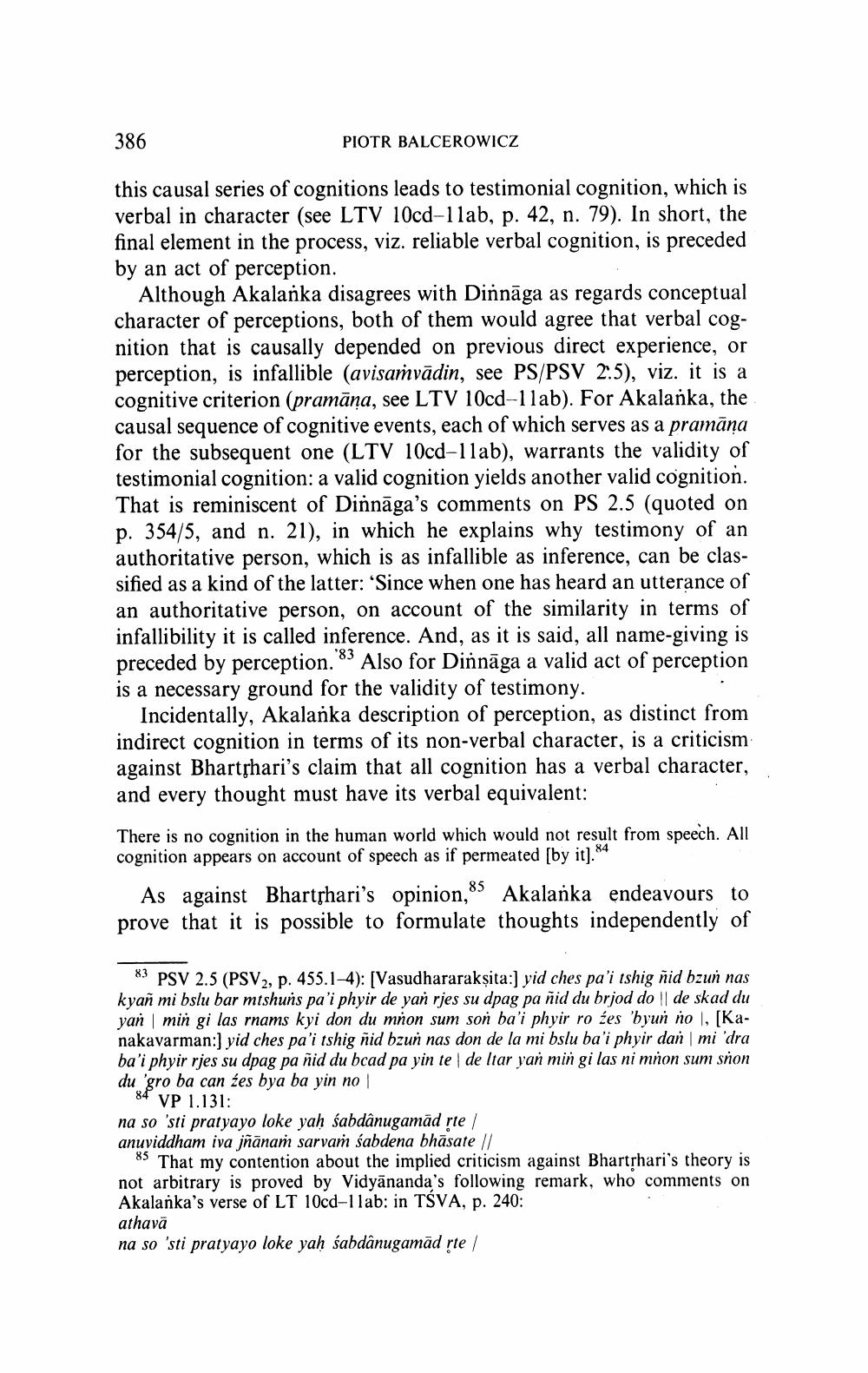________________
386
PIOTR BALCEROWICZ
this causal series of cognitions leads to testimonial cognition, which is verbal in character (see LTV 10cd-1lab, p. 42, n. 79). In short, the final element in the process, viz. reliable verbal cognition, is preceded by an act of perception.
Although Akalanka disagrees with Dinnāga as regards conceptual character of perceptions, both of them would agree that verbal cognition that is causally depended on previous direct experience, or perception, is infallible (avisamvādin, see PS/PSV 2.5), viz. it is a cognitive criterion (pramāna, see LTV 10cd-1lab). For Akalanka, the causal sequence of cognitive events, each of which serves as a pramāna for the subsequent one (LTV 10cd-1lab), warrants the validity of testimonial cognition: a valid cognition yields another valid cognition. That is reminiscent of Dinnāga's comments on PS 2.5 (quoted on p. 354/5, and n. 21), in which he explains why testimony of an authoritative person, which is as infallible as inference, can be classified as a kind of the latter: 'Since when one has heard an utterance of an authoritative person, on account of the similarity in terms of infallibility it is called inference. And, as it is said, all name-giving is preceded by perception. 83 Also for Dinnāga a valid act of perception is a necessary ground for the validity of testimony.
Incidentally, Akalanka description of perception, as distinct from indirect cognition in terms of its non-verbal character, is a criticism against Bhartshari's claim that all cognition has a verbal character, and every thought must have its verbal equivalent:
There is no cognition in the human world which would not result from speech. All cognition appears on account of speech as if permeated [by it).**
As against Bharthari's opinion,85 Akalanka endeavours to prove that it is possible to formulate thoughts independently of
83 PSV 2.5 (PSV2, p. 455.1-4): [Vasudhararakṣita:) yid ches pa'i tshig ñid bzun nas kyañ mi bslu bar mtshuns pa'i phyir de yan rjes su dpag pa nid du brjod do || de skad du yan min gi las rnams kyi don du mnon sum son ba'i phyir ro zes 'byun no 1, [Kanakavarman:) yid ches pa'i tshig ñid bzun nas don de la mi bslu ba'i phyir dan | mi 'dra ba'i phyir rjes su dpag pa nid du bcad pa yin te de Itar yan min gi las ni mnon sum snon du 'gro ba can zes bya ba yin no
84 VP 1.131: na so 'sti pratyayo loke yaḥ śabdânugamad rte / anuviddham iva jñānam sarvam śabdena bhāsate //
85 That my contention about the implied criticism against Bharthari's theory is not arbitrary is proved by Vidyānanda's following remark, who comments on Akalanka's verse of LT 10cd-1 lab: in TŠVA, p. 240: athavā na so 'sti pratyayo loke yah sabdânugamās rte /




